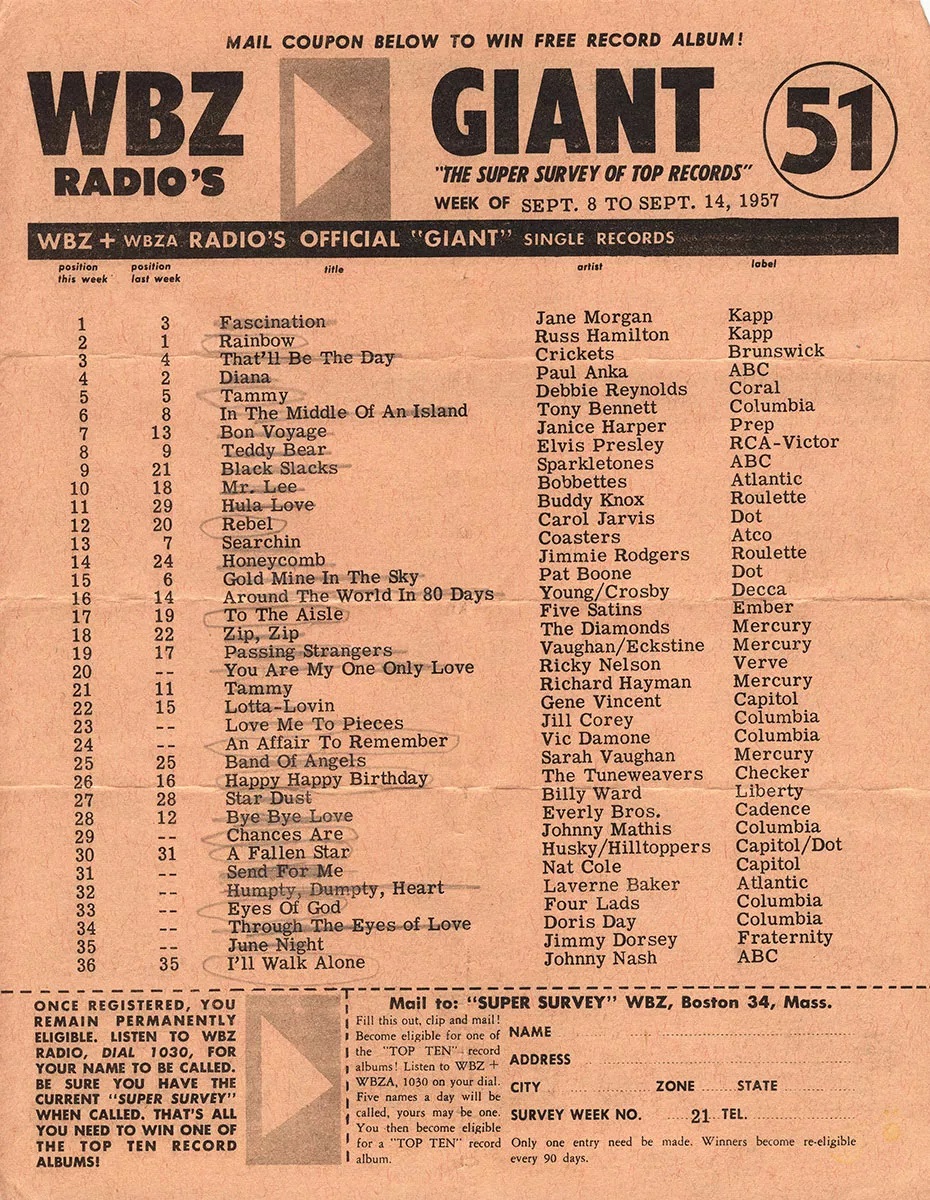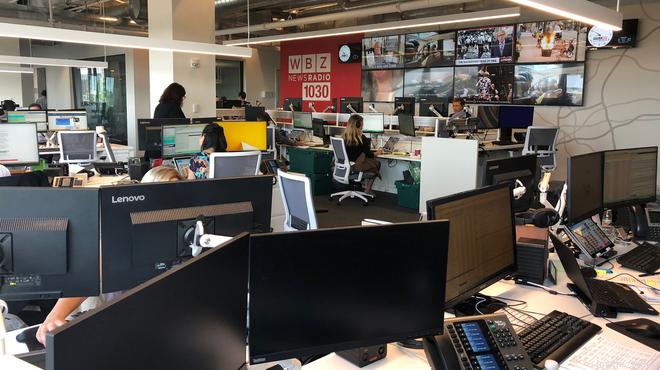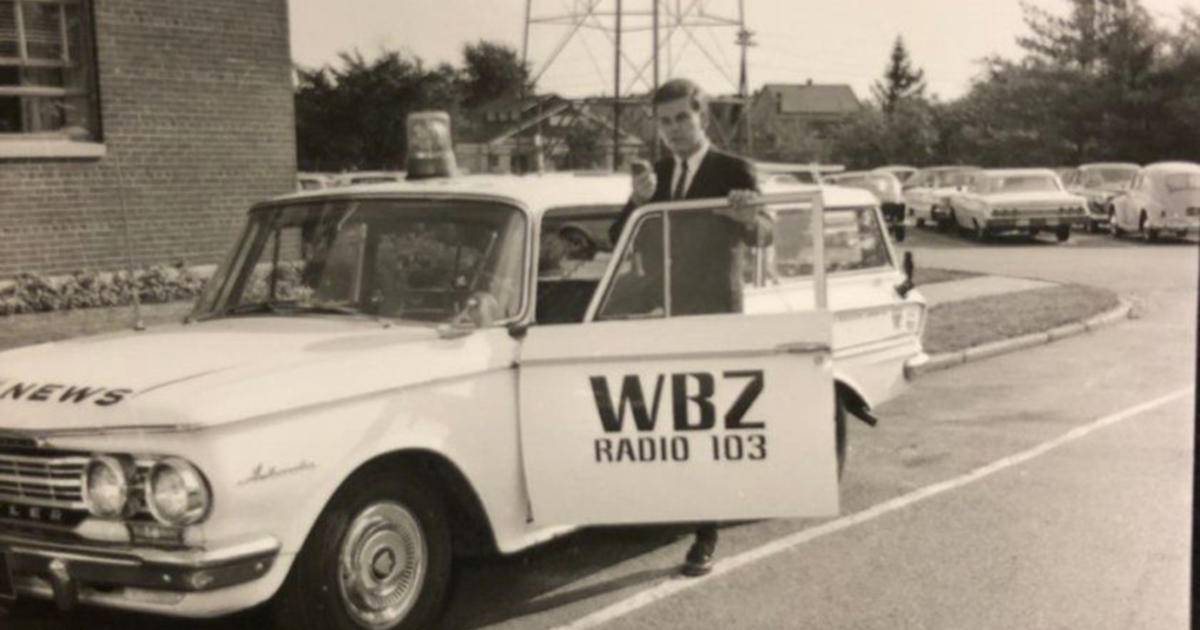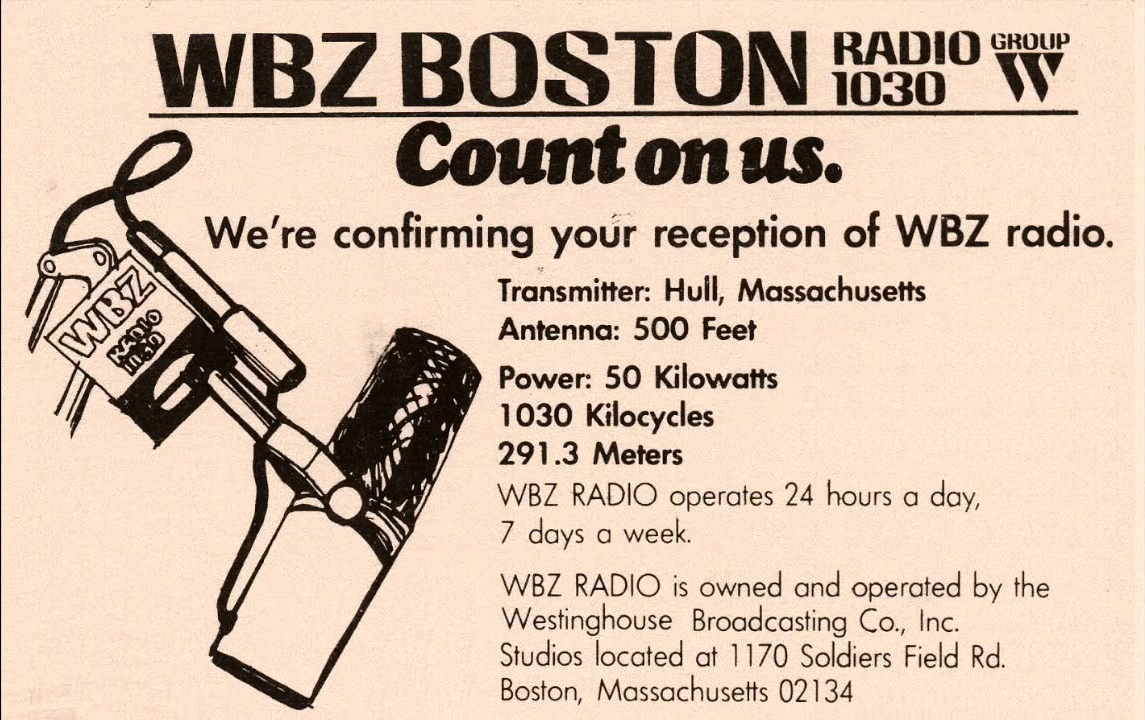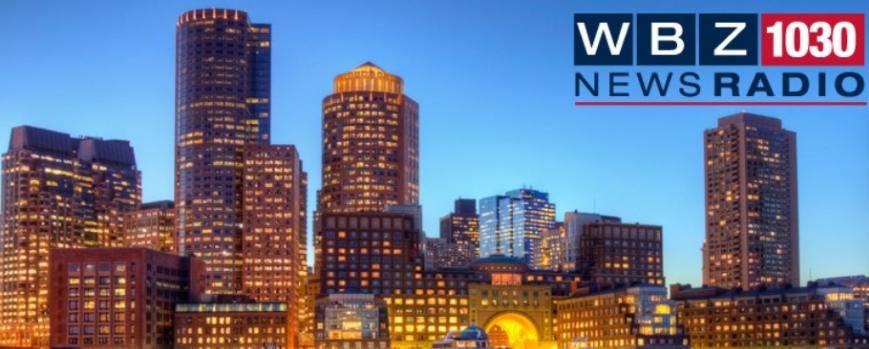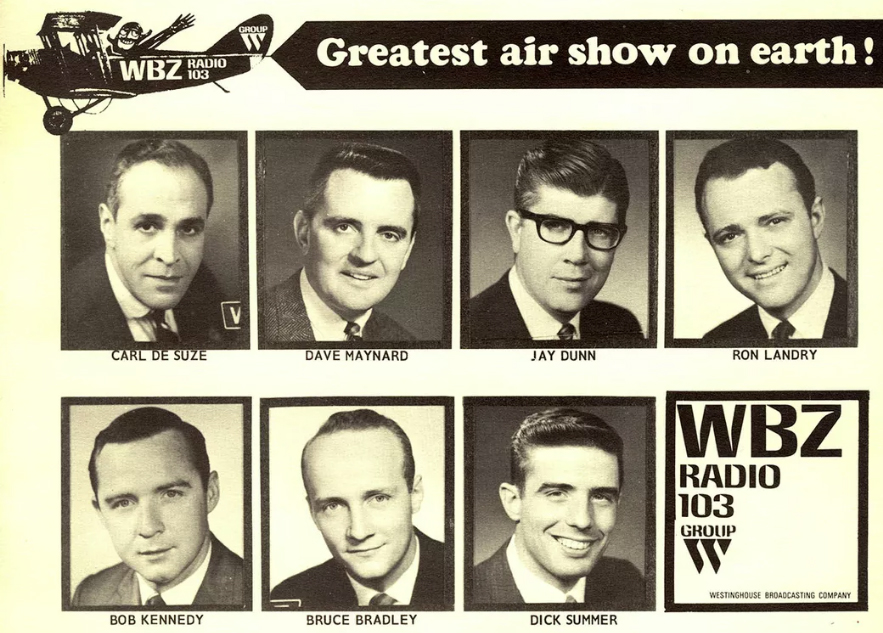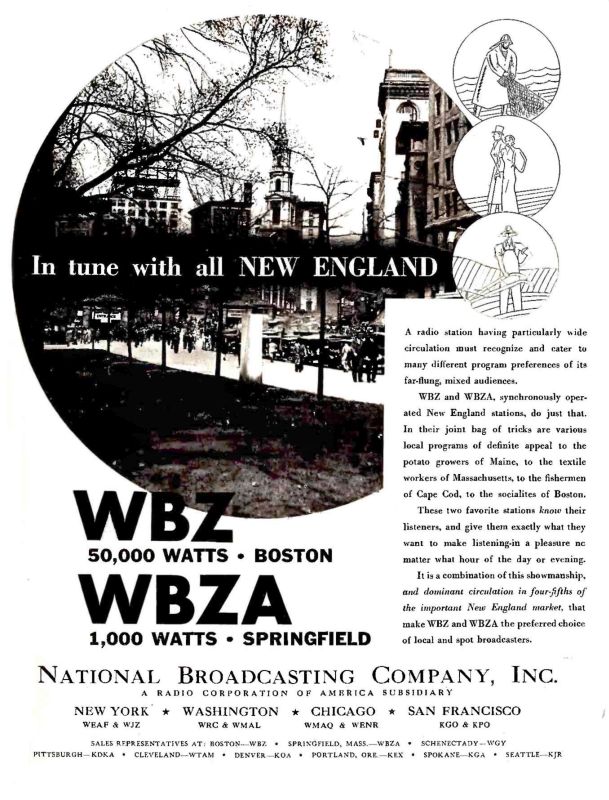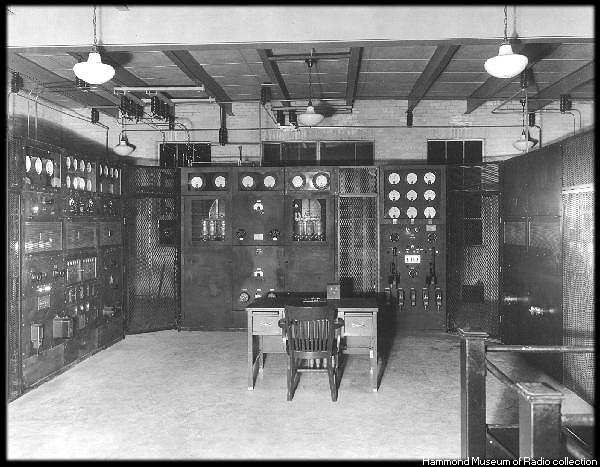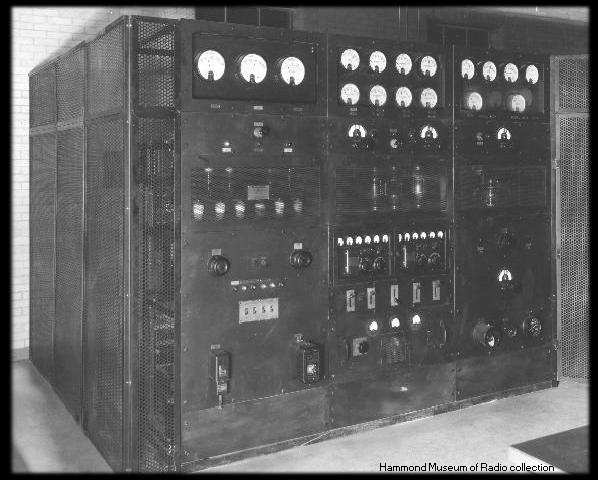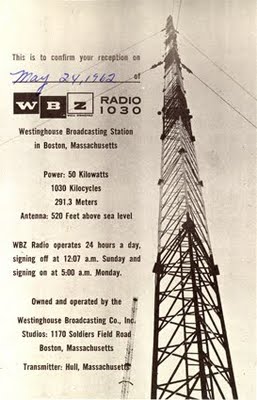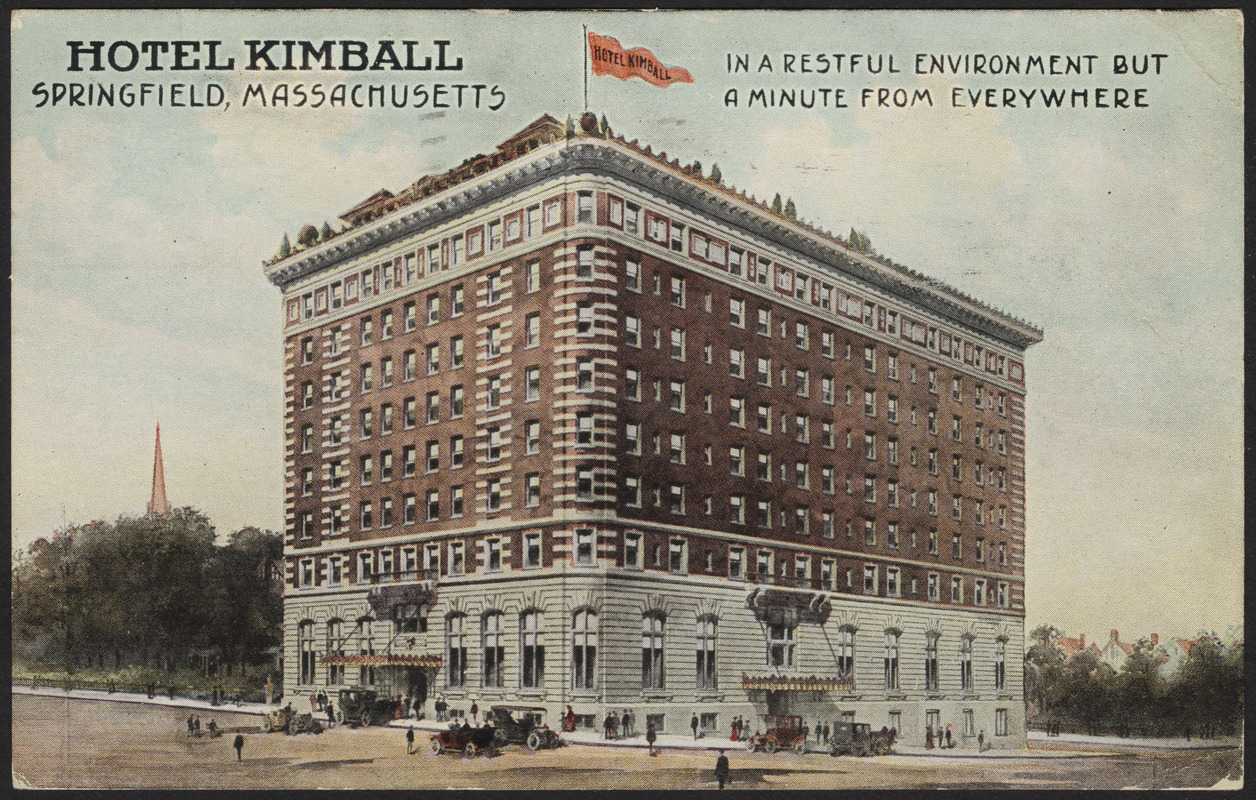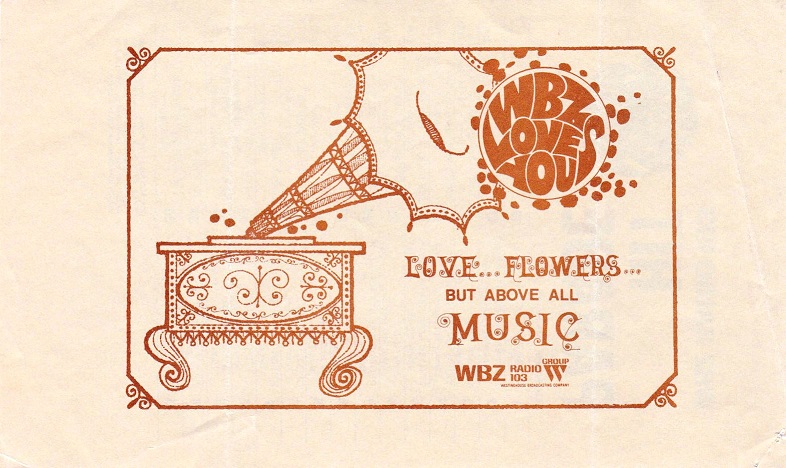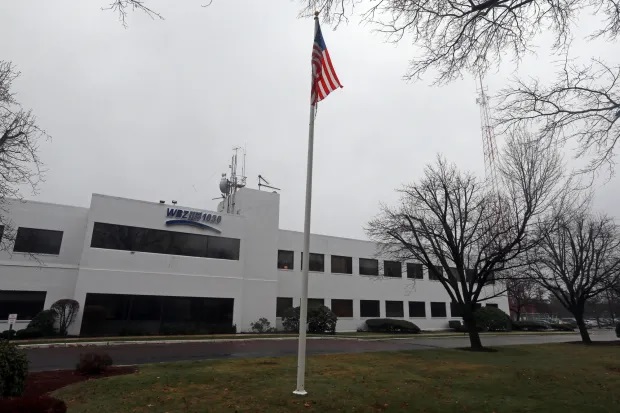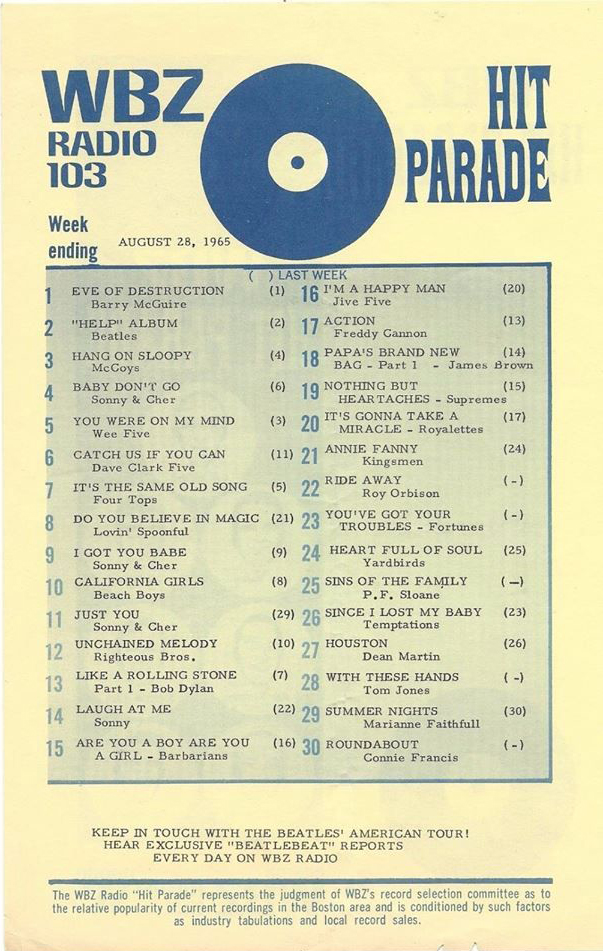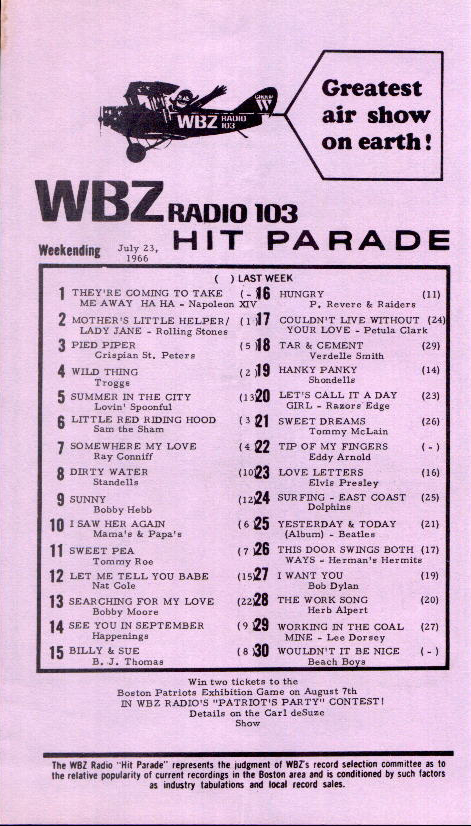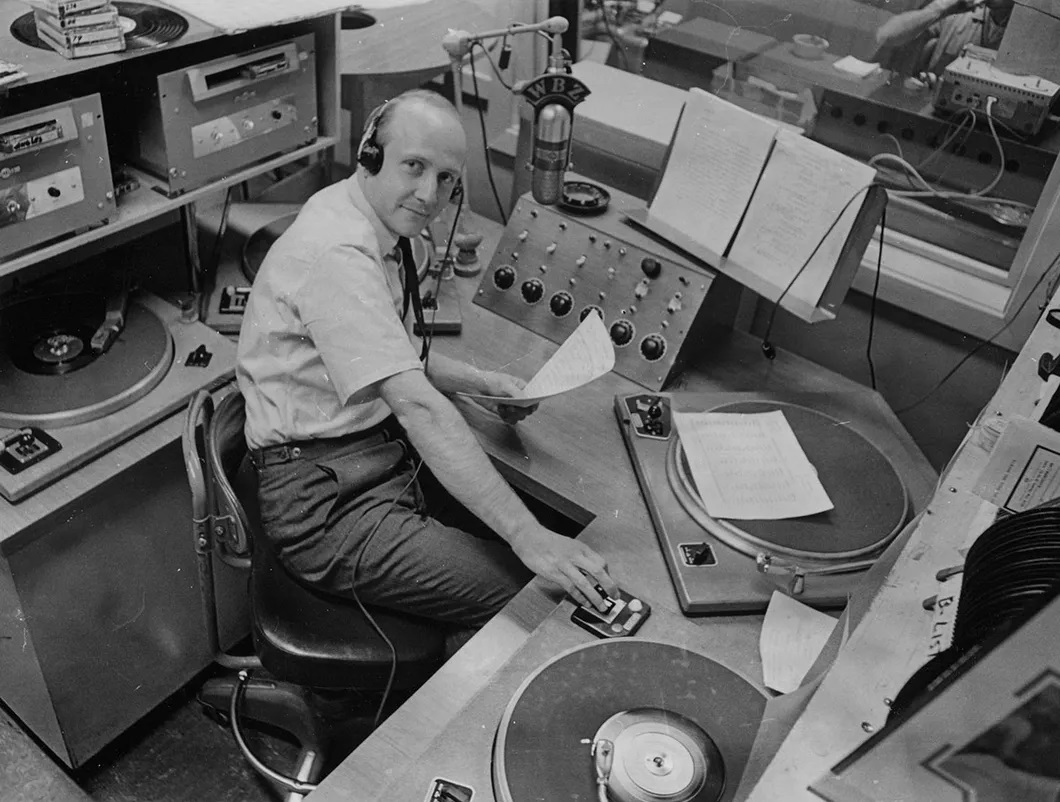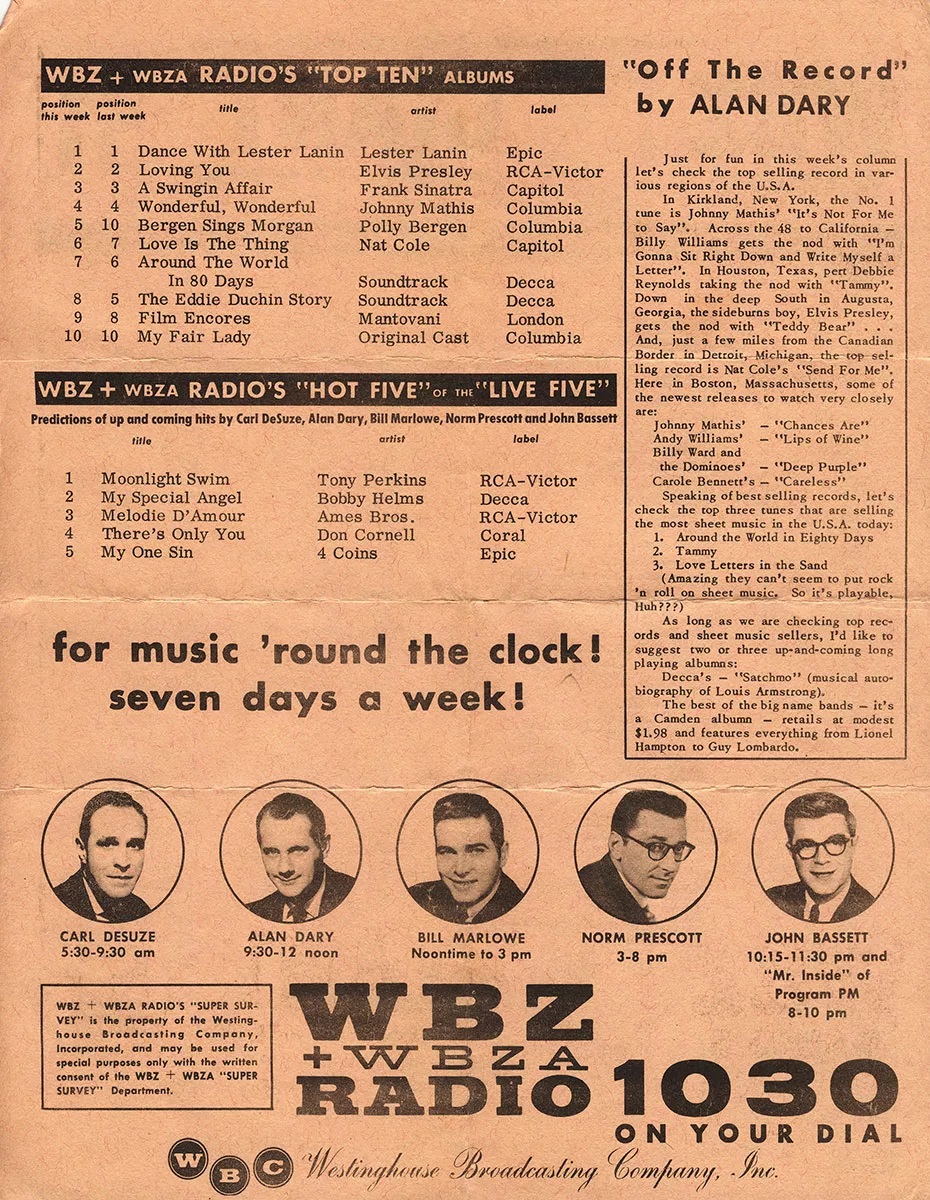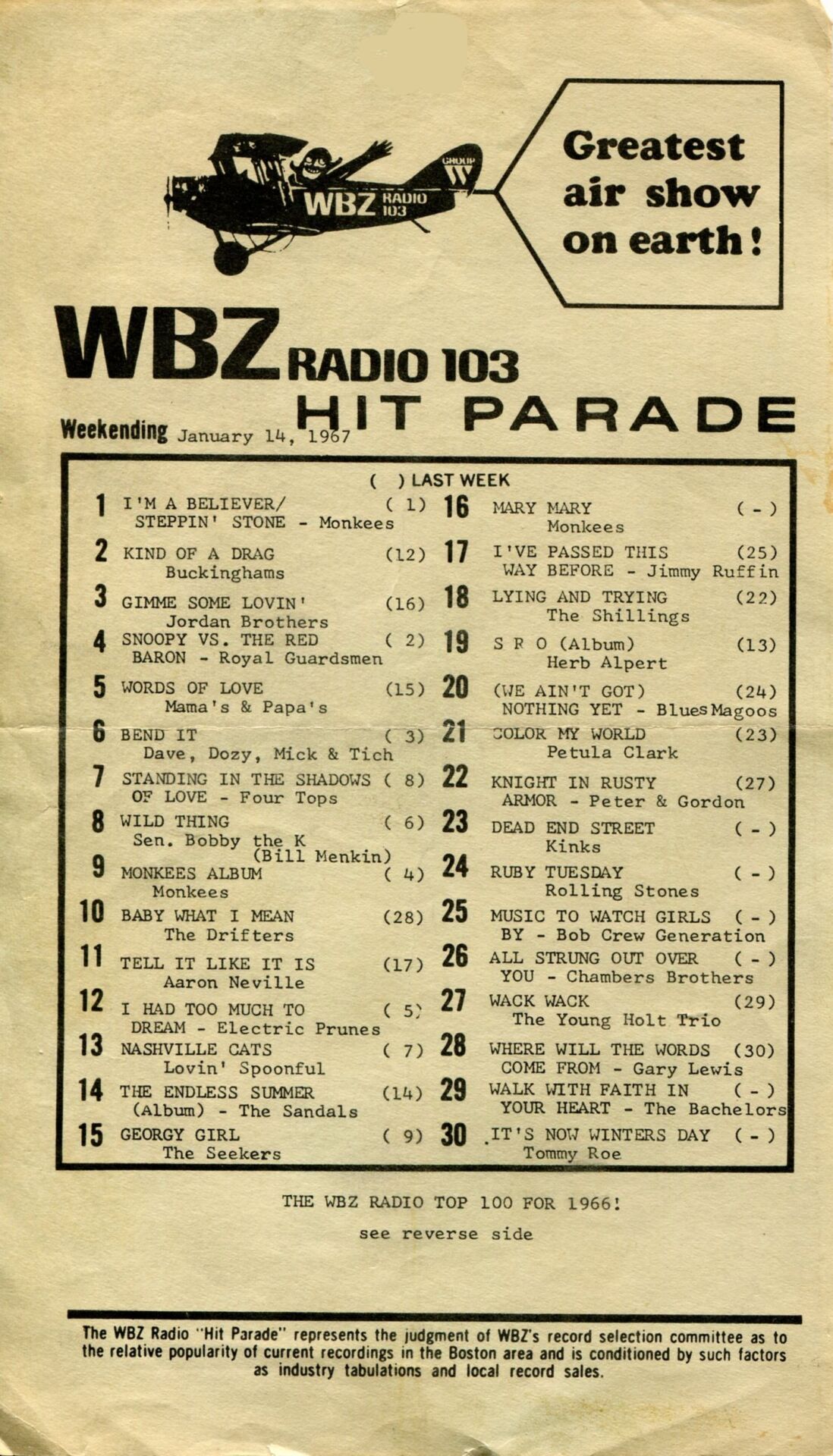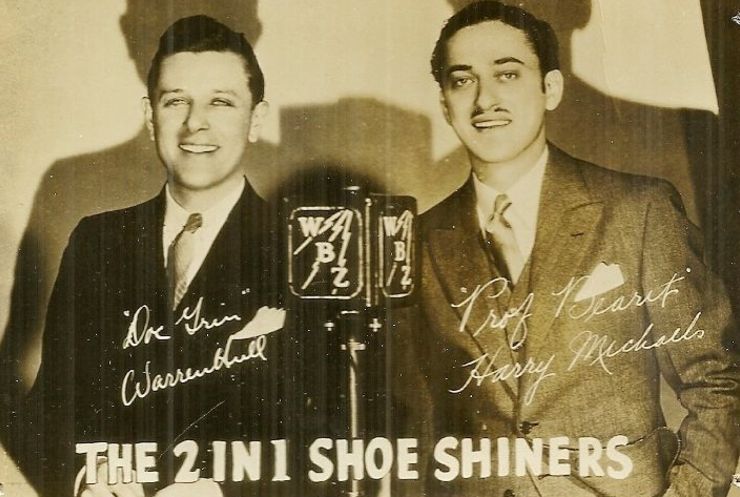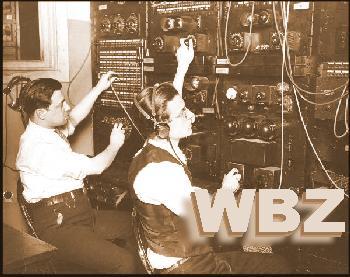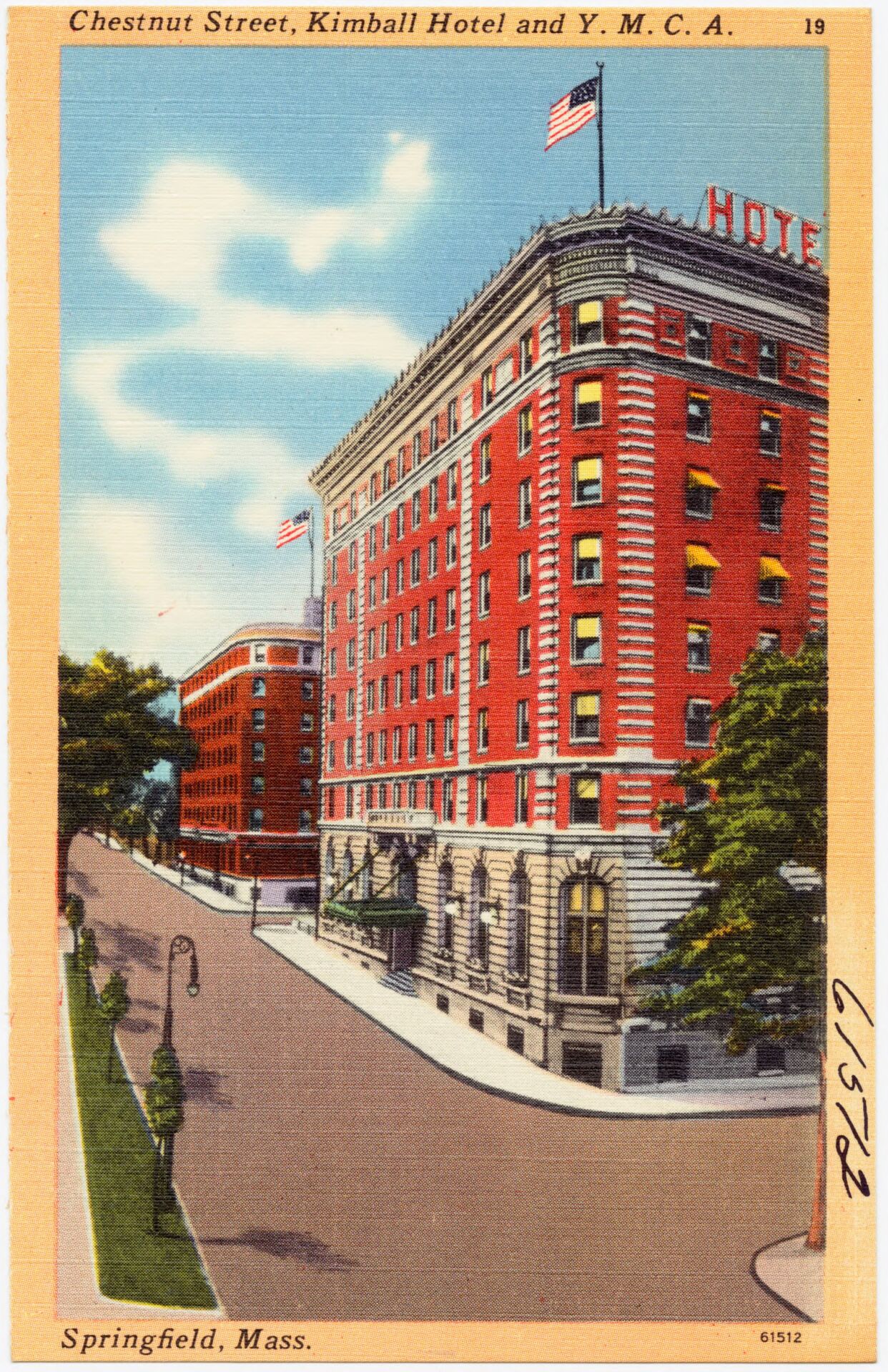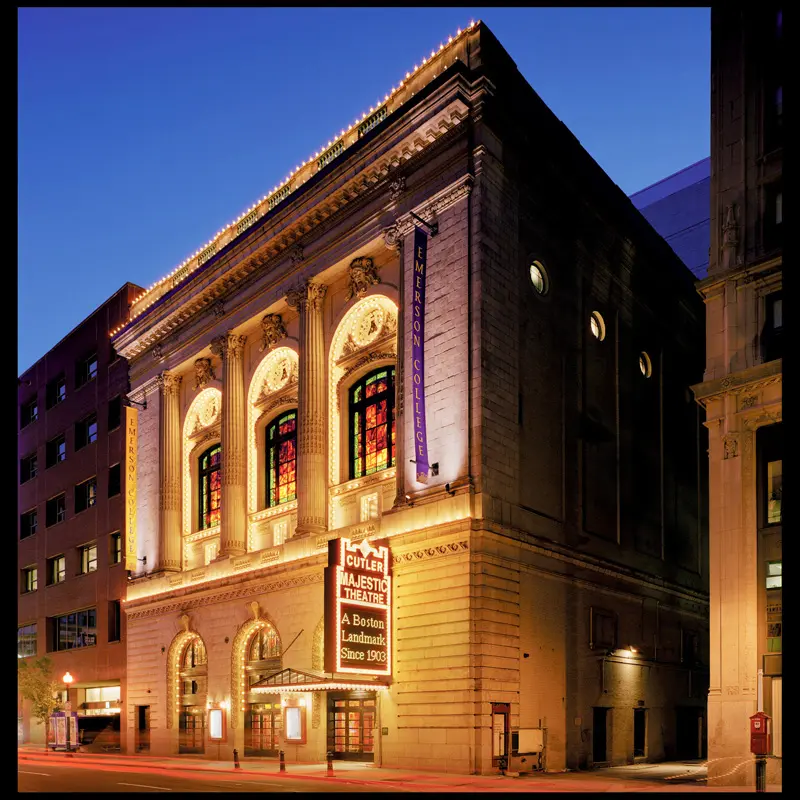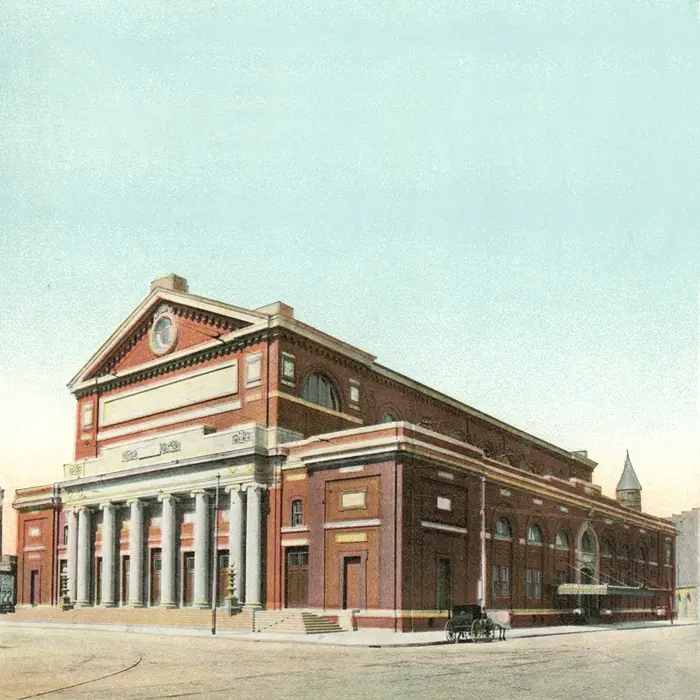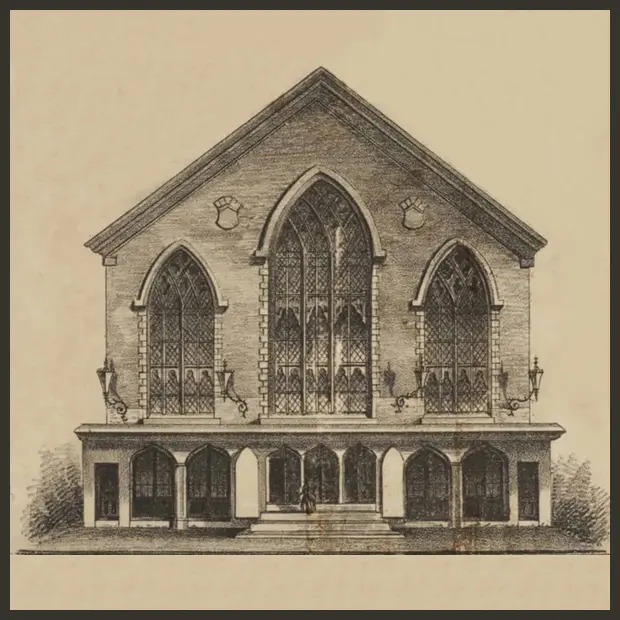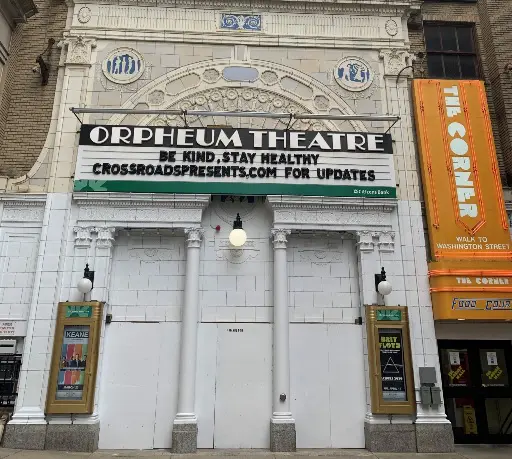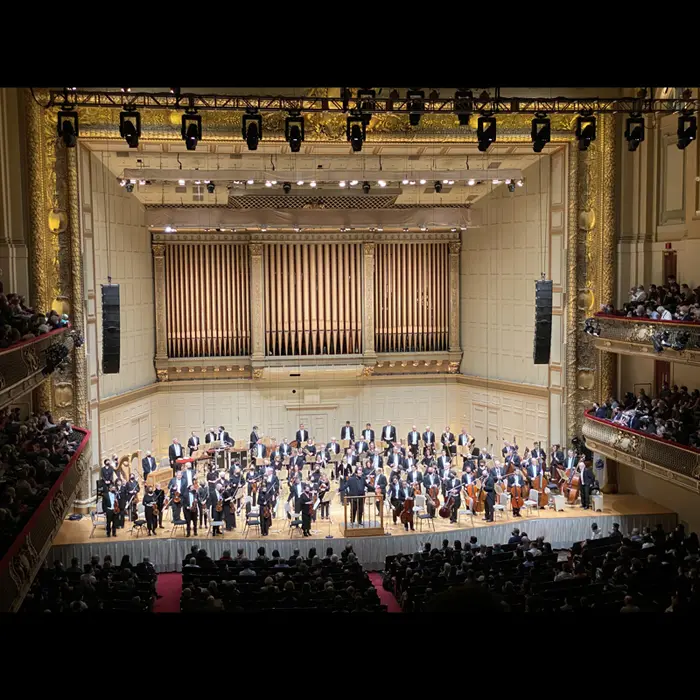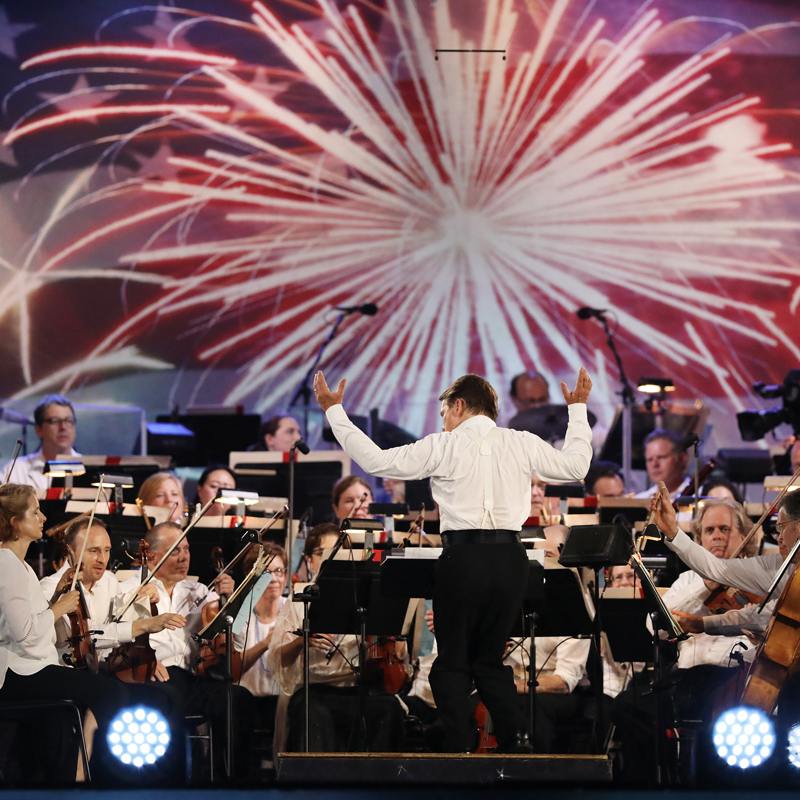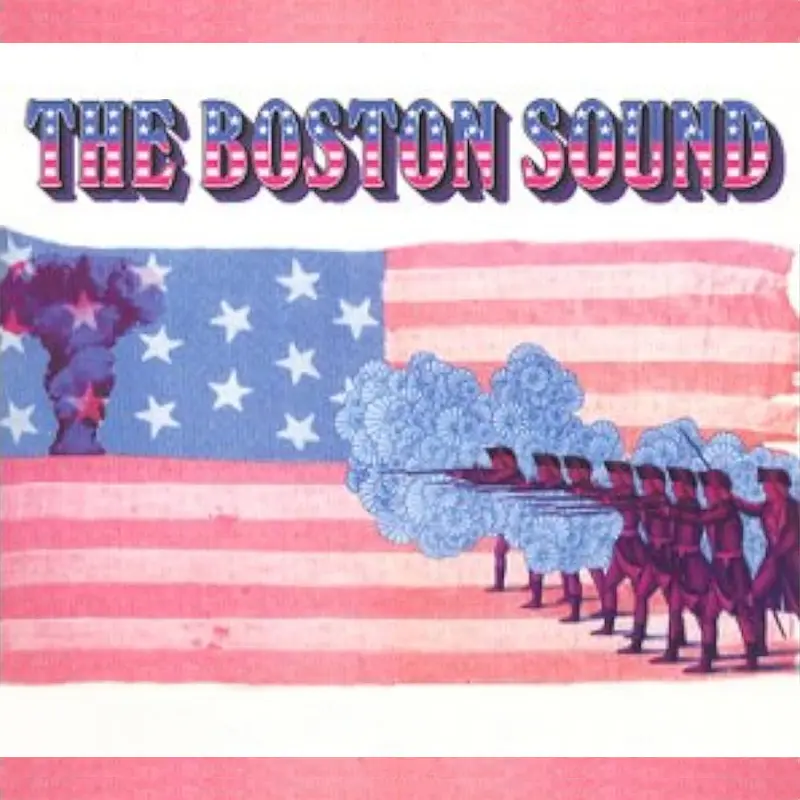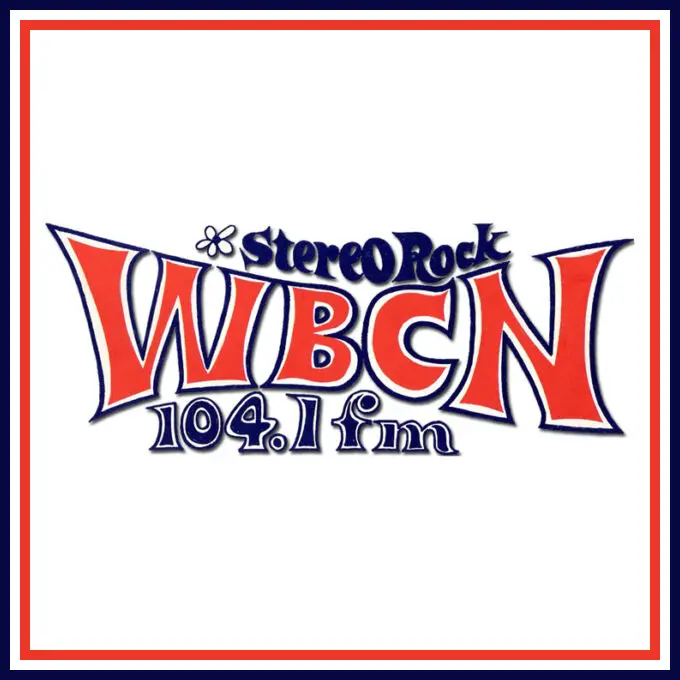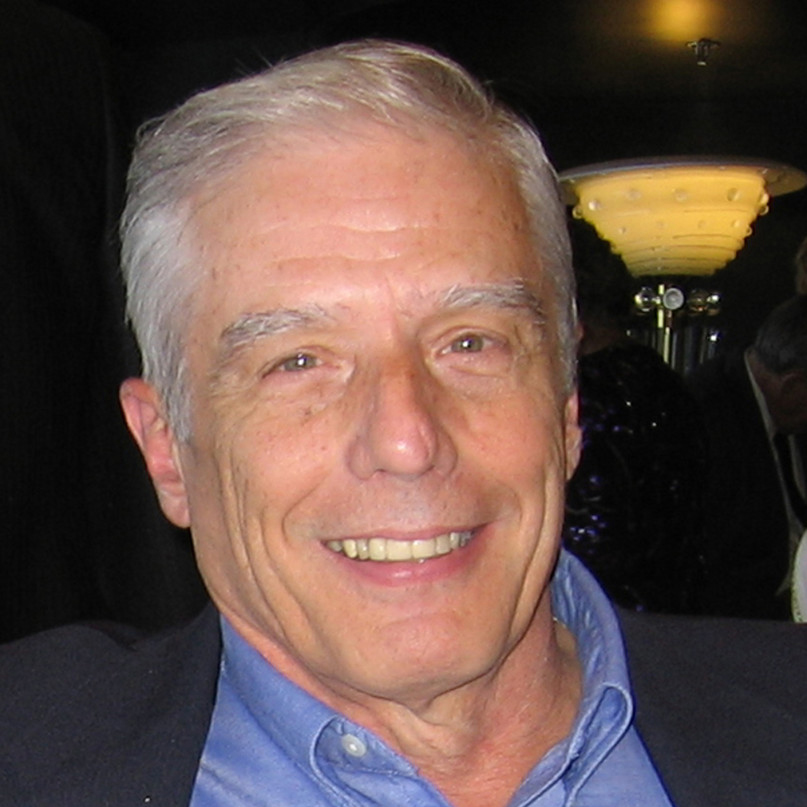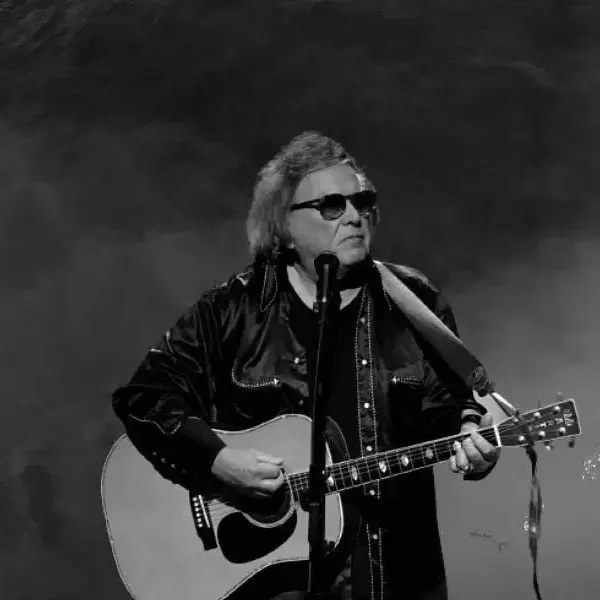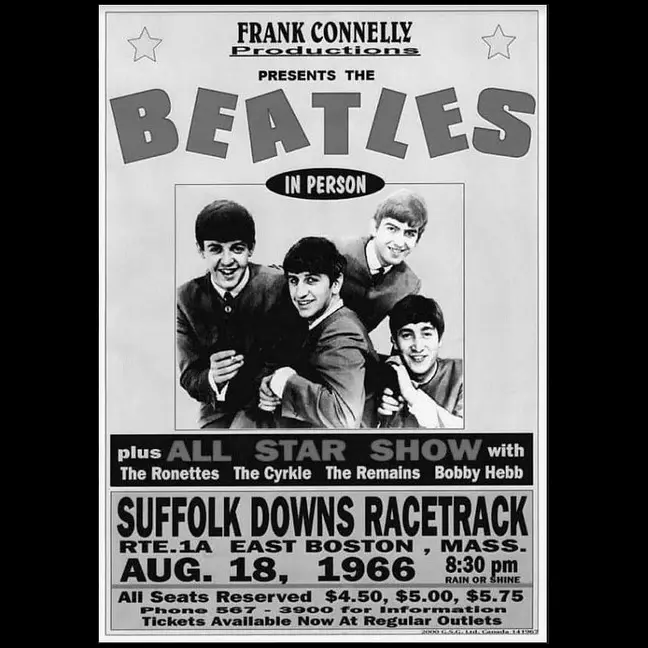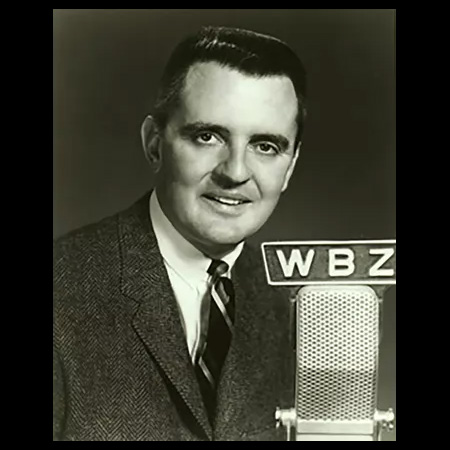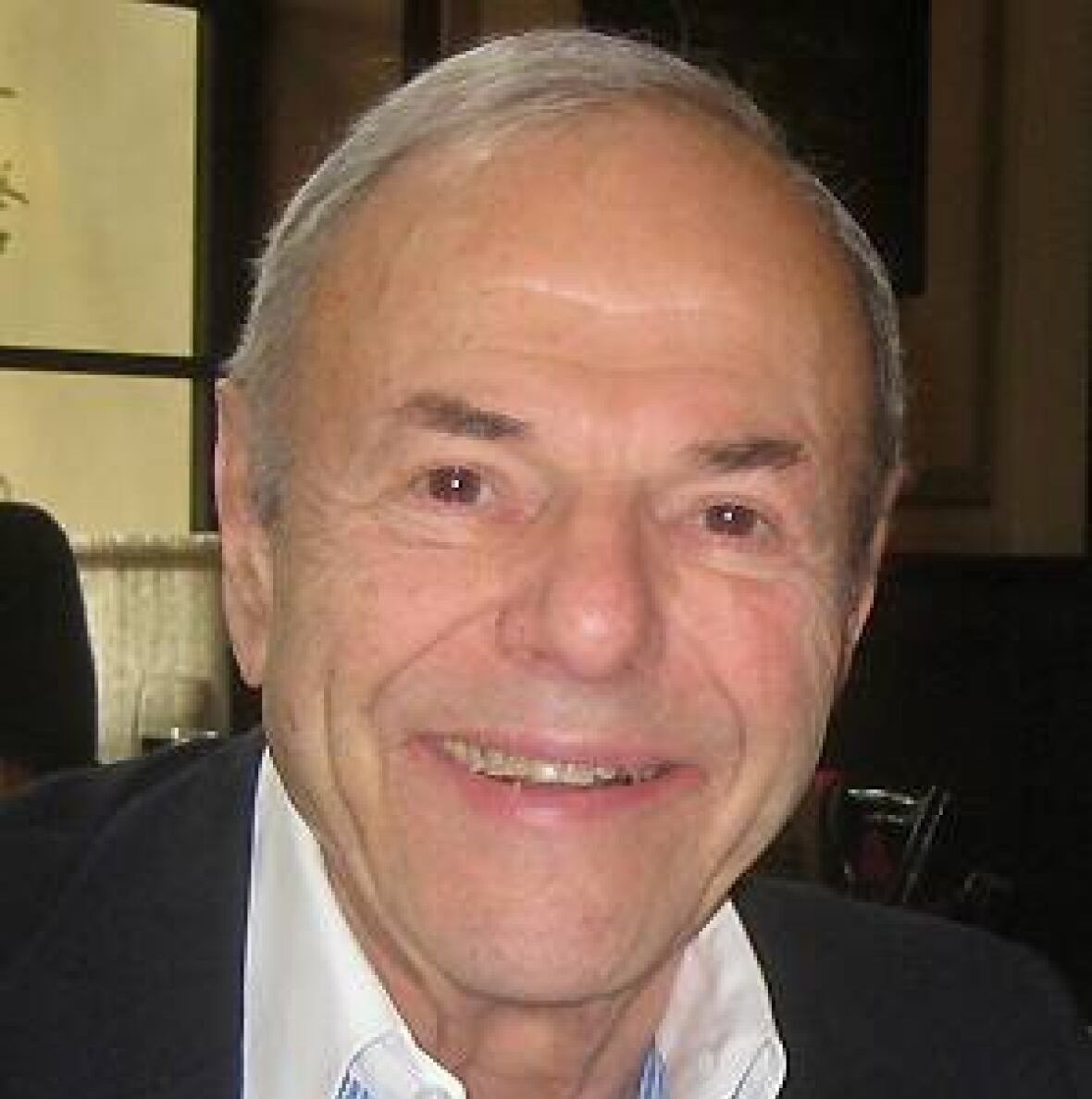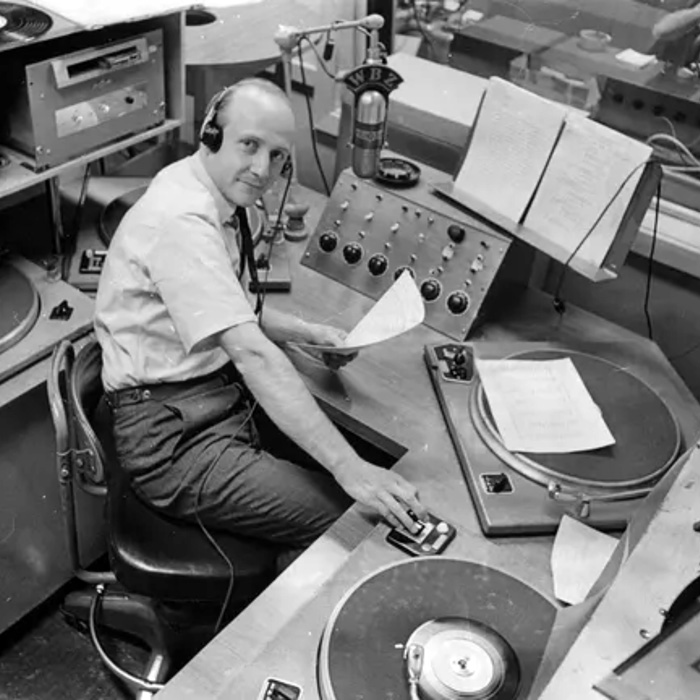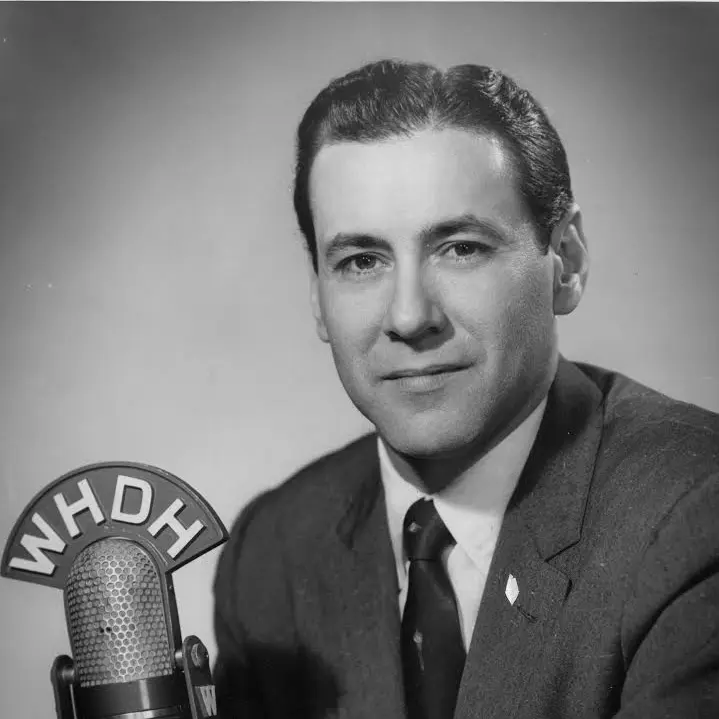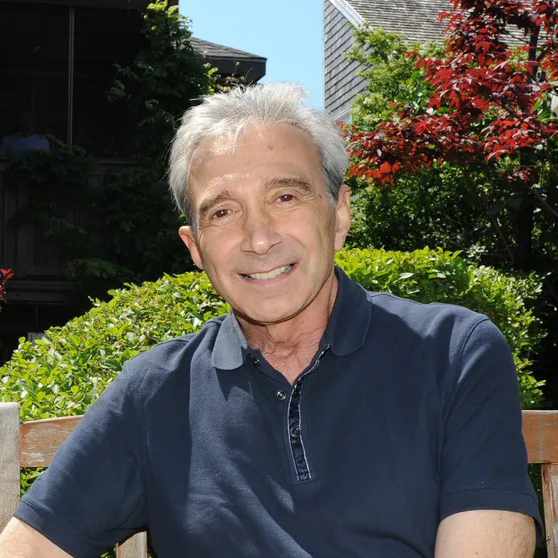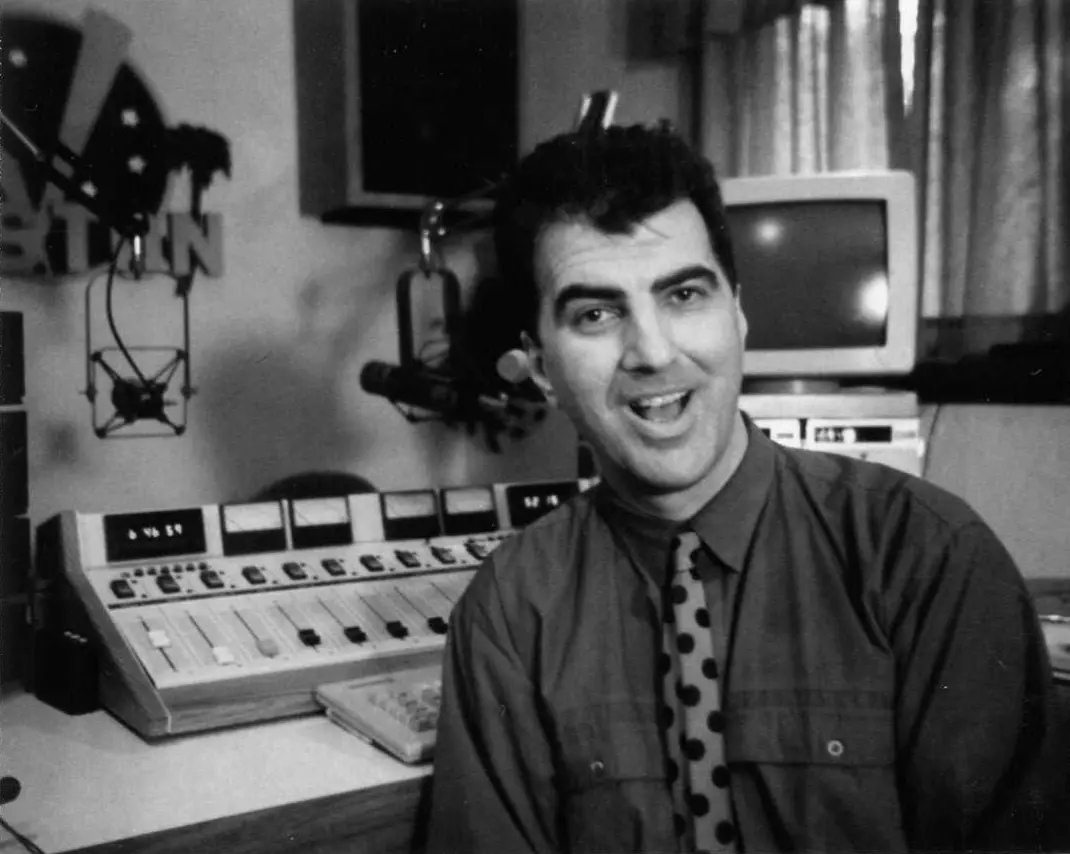WBZ
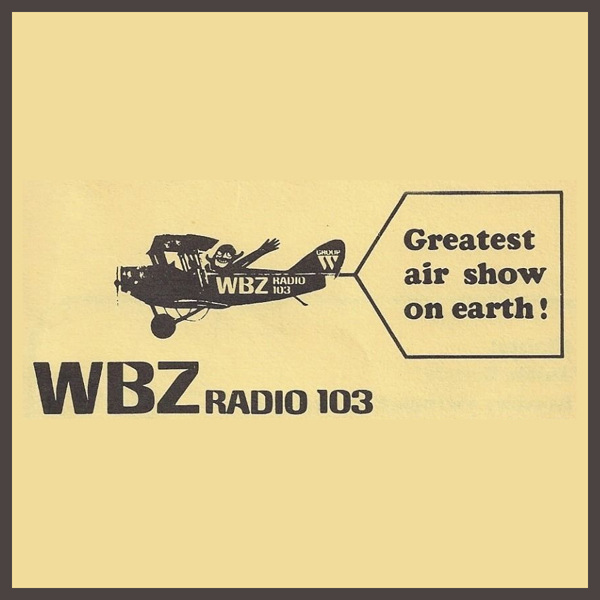
For over 100 years, WBZ has been as synonymous with New England as clam chowder and “Yankee values,” a broadcasting behemoth that’s maintained a down-home feel despite reaching millions in its home region, dozens of other US states and much of eastern Canada. And as the first station in the US to be issued a commercial broadcasting license, ‘BZ is almost as significant to the history of American radio as Boston is to the history of the American Revolution.
HISTORICAL CONTEXT
In 1920, the year before ‘BZ went on air, the times they were a’changin’ socially in the US – Prohibition started in January and women won the right to vote in August – but musical entertainment remained limited to two sources: 78-rpm records played on phonographs (a fixture in middle-class American homes by then) and live performances. And when it came to the latter, Boston boasted a bevy of world-class options – from highfalutin to family-friendly to down-and-dirty – including classical and opera at Symphony Hall, musicals and opera at the Majestic Theatre, vaudeville at the Orpheum Theatre and burlesque at Howard Athenaeum.
But the times were a’changin’ technologically in 1920, too, and a revolution in musical entertainment for the masses was underway thanks to turn-of-the-century breakthroughs in “wireless telegraphy“ by Nicholas Tesla, Guglielmo Marconi and others. In August that year, broadcast radio as we know it began when 8MK (later WWJ) in Detroit went on the air, followed in November by 8XK (later KDKA) in Pittsburgh, the former with an amateur broadcasting license and the latter under a limited commercial one.
FIRST COMMERCIAL LICENSEE, ORIGINAL LOCATIONS/PROGRAMMING
On September 15, 1921, through its parent organization, Westinghouse Electric & Manufacturing Company, WBZ in East Springfield, Massachusetts, became the first station in the US to be issued with the newly created commercial broadcasting license, according to a July 1923 report by the office of then US Secretary of Commerce (later US President) Herbert Hoover. ‘BZ qualified for the commercial classification since, like only a handful of other stations, it had established itself on two wavelengths as required by federal law at the time for “commercial” consideration: 360 meters (833 kHz) for entertainment and 485 meters (618 kHz) for official weather and other government reports.
The station’s original location was in the Westinghouse Building on Page Boulevard in East Springfield and its first live broadcast was on September 19, 1921, made remotely, from the Eastern States Exhibition in West Springfield; that was nearly six years before broadcasting regulations tightened with the Radio Act of 1927 and the establishment of the Federal Radio Commission (succeeded by the Federal Communications Commission [FCC] in 1934). The Department of Commerce assigned the call letters “WBZ” randomly because “KDKS,” which Westinghouse requested on its license application, had been issued already (to a ship).
In early 1922, the station moved its studios to the Hotel Kimball in the Metro Center section of Springfield. Programming consisted of live and recorded music (often classical and opera), news, sports, farm and agricultural reports, college lectures and public-affairs announcements. By the end of 1922, a radio craze was sweeping the US and some 600 more stations had popped up across the country. Despite ‘BZ’s prestigious location inside Springfield’s most luxurious hotel, being in a relatively remote, mid-sized city made drawing top-tier talent a constant challenge for the nascent station.
1920S: BOSTON STUDIO, WBZA, PROGRAMMING EXPANSION
For the first several years of ‘BZ’s existence, the station’s 100-watt signal (at 900 AM) was barely audible in Boston (about 90 miles from East Springfield) so in early 1924 the station set up a satellite studio inside the Hotel Brunswick at the corner of Boston’s Boylston and Berkeley Streets. After increasing Springfield’s signal to 2,000 watts in April 1925, Westinghouse established a 250-watt relay station for the Boston studio in August and it began airing as WBZA. After multiple failed attempts to broadcast both WBZ and WBZA at 900 AM using a synchronous repeater, WBZA starting airing at 1240 AM in June 1926; WBZ remained at 900 AM.
The Boston location expanded its news programming by partnering with The Boston Herald and The Boston Traveler and started airing live sports, sending play-by-pay announcers to Red Sox, Bruins and Harvard Crimson games. Due to its extensive reach, ‘BZ and ‘BZA usually didn’t identify with Springfield or Boston specifically, using the region-inclusive tagline “The Broadcasting Station of New England” instead. By 1927, WBZ was operating at 15,000 watts and in June that year WBZA moved to the Hotel Statler (now the Boston Park Plaza). In November 1928, by which time ‘BZ’s signal had increased to 20,000 watts, ‘BZ and ‘BZA began airing together on 990 AM.
1920S FIRSTS, NOTABLE EVENTS
During the ‘20s, ‘BZ and ‘BZA expanded their on-air portfolios dramatically, achieving an impressive list of “firsts” in the process. For example, renowned contralto Madame Louise Homer, who began her career in Boston and sang for New York’s Metropolitan Opera, gave her first radio interview on ‘BZ (in November 1921, broadcast from Springfield Auditorium). In April 1923, the station aired one of radio’s first bilingual music programs, a French-English vocal group performing on Montreal’s CKAC Radio.
In 1924, the station introduced late-night programming twice a week (from 11pm to 12am) and 1926 it broadcast its first Boston Symphony Orchestra concert. In 1927, the year after it became one of NBC Radio’s first affiliates, ‘BZ began selling commercial airtime, introduced regular daytime programming and started airing performances by the Boston Pops.
1930S: MOVE TO BOSTON, FURTHER PROGRAMMING EXPANSION
By 1930, the first full year of the Great Depression, the Boston area had over 20 commercial stations and, as the unemployment rate soared from 8.7% in 1930 to 25% in 1933, radio became a lifeline of sorts for the nation. In 1931, since Boston had become WBZ’s primary market, WBZA and WBZ switched call letters, with WBZ broadcasting at 25,000 watts from a transmitter in Millis, Massachusetts (25 miles southwest of Boston, reaching Boston, Worcester and Providence) and WBZA airing at 1,000 watts from Springfield (until being shuttered in 1962).
In 1933, the Millis signal increased to 50,000 watts – by far the most powerful in the Northeast at the time – and ‘BZ began airing regular reports from the National Weather Bureau. The station introduced morning shows (starting at 7am) and expanded its national news coverage in the mid-‘30s, hiring widely respected newsmen including Arch MacDonald, who became WBZ-TV’s first news anchor in 1948.
Among the entertainment offerings were the NBC programs Amos ‘n’ Andy and The Roxy Hour and live sketches by The WBZ Players, which included W. Gordon Swan, known for his sound-effects skills and uncanny animal impersonations. In 1935, country singer Bradley Kincaid (“The Kentucky Mountain Boy”) began appearing regularly on ‘BZ, which helped popularize the genre in New England and the greater Northeast.
1930S FIRSTS, NOTABLE EVENTS, “PURITY CODE”
WBZ’s “firsts” in the 1930s rivaled those of the previous decade, staring in 1930 when the station put Mildred Carlson in charge of programs targeting women and she began hosting a show called Home Forum; given the institutional male chauvinism of the era, it was a groundbreaking move. In 1931, the station aired the first broadcast of the Boston Marathon and in April 1932 the “lion incident” occurred: Producers brought a supposedly tame lion into the studio to roar on cue, but it became agitated and ran through the studios and offices, breaking windows, knocking over equipment, terrifying onlookers and injuring seven ‘BZ employees before being subdued by the police.
In March 1936, ‘BZ was the only station to provide live, in-depth coverage of massive flooding in the Springfield area and in September 1938 it was the first station to warn listeners of the Great New England Hurricane (which killed 682 and destroyed some 57,000 homes). Throughout the ‘30s, ‘BZ had a staunchly conservative reputation because Program Director John L. Clark’s “purity code” banned songs with lyrics he thought were offensive or too sexually suggestive, regardless of the singer’s popularity. In 1931, he censored a song by famed bandleader Joe Rines, a Boston native, pulling the plug midway while he was singing live; Rines was outspoken about his objection to the censorship and newspapers ran columns for weeks debating the limits of free speech.
1940S: NBC DEPARTURE, MOVE TO 1030 AM, WBZ-TV LAUNCH
WBZ’s third decade began with major changes, beginning in July 1940, when NBC’s management of WBZ and WBZA ended and Westinghouse regained full control over both stations. That same month, WBZ relocated its transmitter to Hull, Massachusetts, on the southern edge of Boston Harbor. The main reason was that Hull is only five miles from Boston over water (about 20 miles by land) and thus provided a much clearer signal to the city than land-locked Millis. From late 1940 to late 1948, WBZ’s FM stations (W1XK, W67B and WBZ-FM) used the Hull transmitter.
In March 1941, WBZ’s clear-channel assignment moved from 990 AM to the frequency it’s used ever since, 1030 AM. In June 1948, the station moved into television with the establishment WBZ-TV, an NBC affiliate, at 1170 Soldier’s Field Road in the Allston neighborhood of Boston and radio operations were relocated to the new facility. In November that year, WBZ-FM (106.7) began using the Allston studios’ transmitter.
1950S: 24-HOUR BROADCASTING, MIDDLE-OF-THE-ROAD FORMAT
By 1950, radio was a staple of the American lifestyle and the transistor radio’s introduction in the mid-‘50s made the medium portable – a technological leap akin to Wi-Fi in the Eisenhower era. And with most non-musical entertainment moving to television, music became a much larger part of radio programming, with stations battling to attract rock ‘n’ roll’s ever-fickle primary demographic: teenagers.
In 1955, ‘BZ began 24-hour-a-day programming and in 1956 it ended its 30-year affiliation with NBC Radio following a dispute over ‘BZ’s latest daytime offerings. The station adopted a middle-of-the-road (MOR) musical format – noted for vocal harmonies and light orchestration (later rebranded “soft rock”) – but added harder, more blues-twinged rock toward the end of the decade. By the time 1960 arrived, ‘BZ was the region’s dominant station, consistently #1 in industry rankings and listener polls.
1960S: SPRINGFIELD CLOSING, ADULT-CONTEMPORARY FORMAT
In 1962, Westinghouse shuttered WBZA in Springfield to allow for its purchase of WINS in New York City – the first US station to have an all-rock format – per FCC regulations that barred a single company from owning more than seven stations. The rest of the ‘60s saw major shifts in ‘BZ’s music programming as rock and its growing list of subgenres commandeered the airwaves.
While ‘BZ had something of a folk bent in the late ‘50s and early ’60s, by the mid-‘60s the folk craze had waned and the station found itself losing market share to WMEX (which adopted a rock-dominant top-40 format in 1957) and WRKO (which did so in 1967). In March 1968, the launch of WBCN-FM gave Boston-area rockers the hippest radio option yet, but ‘BZ deejays like Dick Summer helped keep ‘BZ relevant with their tireless support of rock acts, particularly Bosstown Sound bands.
In 1969, ‘BZ changed from an MOR format to an adult-contemporary one, meaning a ballad-heavy repertoire that included easy listening, rock, soul and R&B that – unlike WBCN and other rock-centric FM outlets – appealed to a broad demographic. For the next 12 years, music was a central part of ‘BZ’s programming: On weekdays, the station played a few songs per hour between 6am and 9am, 10 to 12 songs an hour between 9am and 4pm and four to six songs an hour between 4 and 7pm; at night, ‘BZ aired talk shows and sports; on weekends, there was music throughout the day along with news, sports and public-affairs programs.
1970S, 1980S: TOP-40 FORMAT, MOVE TO TALK RADIO
In December 1971, WBZ-FM moved to a rock-dominant top-40 format and began broadcasting in stereo in an apparent attempt to draw listeners away from Boston’s leading top-40 station, WRKO-AM, which was still in mono. By the end of the decade, however, top-40 radio had migrated almost entirely from AM to FM, resulting in a shift from music to talk shows on AM stations nationwide, including ‘BZ. In early 1981, the station became an ABC Radio affiliate, Westinghouse sold WBZ-FM to Braintree, Massachusetts-based Greater Media Inc. and for the rest of the decade WBZ-AM played only four songs per hour on average except for the 3.25-hour syndicated program American Top 40, which it aired weekly between 1985 and 1988.
1990s: MUSIC PROGRAMMING ENDS, “BOSTON’S NEWS STATION”
The ‘90s was, to paraphrase Don McLean’s “American Pie,” the decade the music died at WBZ. In January 1991, intense coverage of the Gulf War led to the station removing music from its regular programming and pivoting to news and talk (as rivals WRKO and WHDH had done already). Upon hearing that the war had begun, ‘BZ Program Director David Bernstein ordered that the music carousel be removed from the studio immediately, vowing that the station “will never play music again,” according the trade publication Radio & Records.
On March 4, 1991, the format change became permanent and ‘BZ started promoting itself as “Boston’s News Station.” Since then, it’s played music on special occasions only including 24 straight hours of Christmas tunes starting on Christmas Eve (until 1995), the Boston Pops’ Fourth of July concerts (from 2003 to 2016) and The Beatles’ Let It Be…Naked album (upon its release in November 2003).
WBZ RADIO HALL OF FAME, NOTABLE PERSONALITIES
In February 2007, the station created the WBZ Radio Hall of Fame. Newsman Gary LaPierre was the first inductee, sports announcer Gil Santos was the second, morning man Dave Maynard was the third and morning/midday man Carl DeSuze was the fourth. Other notable figures heard on the station’s airwaves through the decades include Jeff Kaye, Ron Landry, Joe Smith, Bob Kennedy, Bruce Bradley, Norm Nathan, Bob Clayton, Dean Johnson, Streeter Stuart, Larry Justice, Don Kent, Ron Robin, Larry Glick, John Garabedian and Tom Bergeron.
IHEARTMEDIA ACQUSITION, RELOCATION, RESTRUCTURING
In December 2017, WBZ was acquired by Texas-based iHeartMedia (which also owns Boston-based WRKO, WZLX and WZRM), ending its 96 years under the Westinghouse umbrella. In 2018, the company moved ‘BZ’s studios to Medford, Massachusetts, and in 2020 widespread downsizing led to the dismissal of longtime on-air staff including morning anchor Deb Lawler, sports anchor Tom Cuddy, talk-show host Bradley Jay and political commentator Jon Keller. The media giant said the cuts will help it maximize the “significant investments” it’s made in technology, particularly in artificial intelligence.
In October 2020, the 216-foot-tall WBZ antenna that towered over Soldiers Field Road for over 70 years was torn down. Arguably as iconic as the Citgo sign visible from Fenway Park, its absence represents the end of radio’s “good old days” for countless Bostonians and New Englanders in general.
(by D.S. Monahan)

